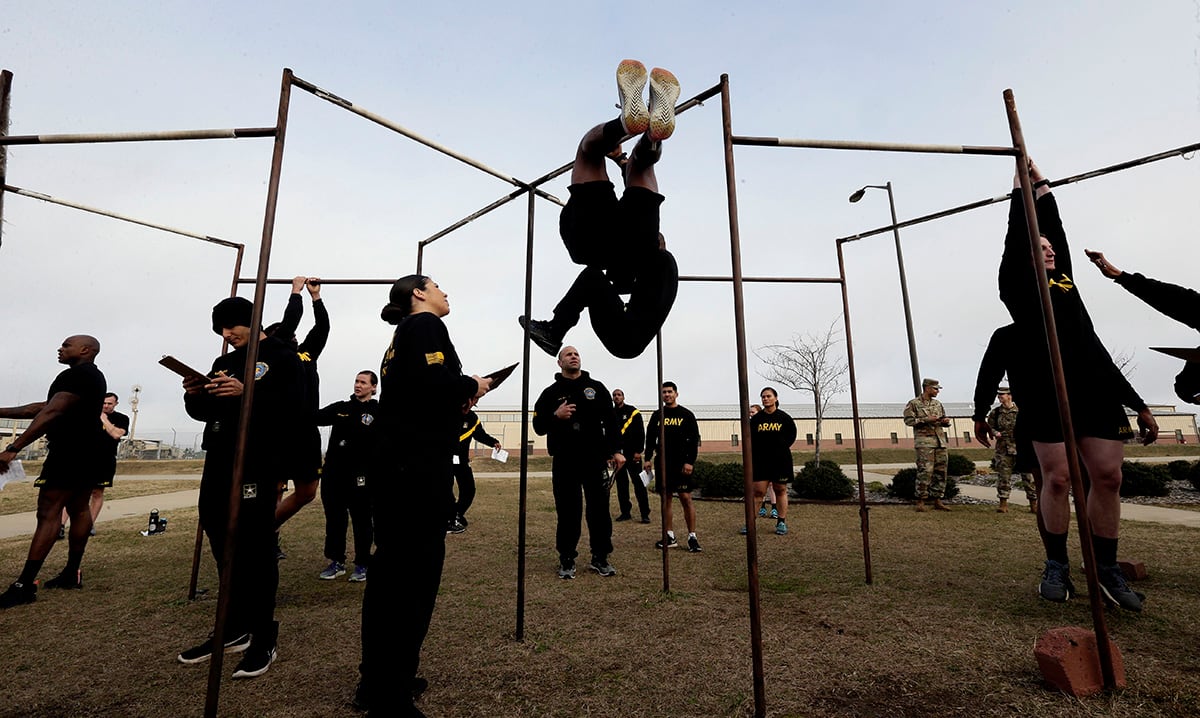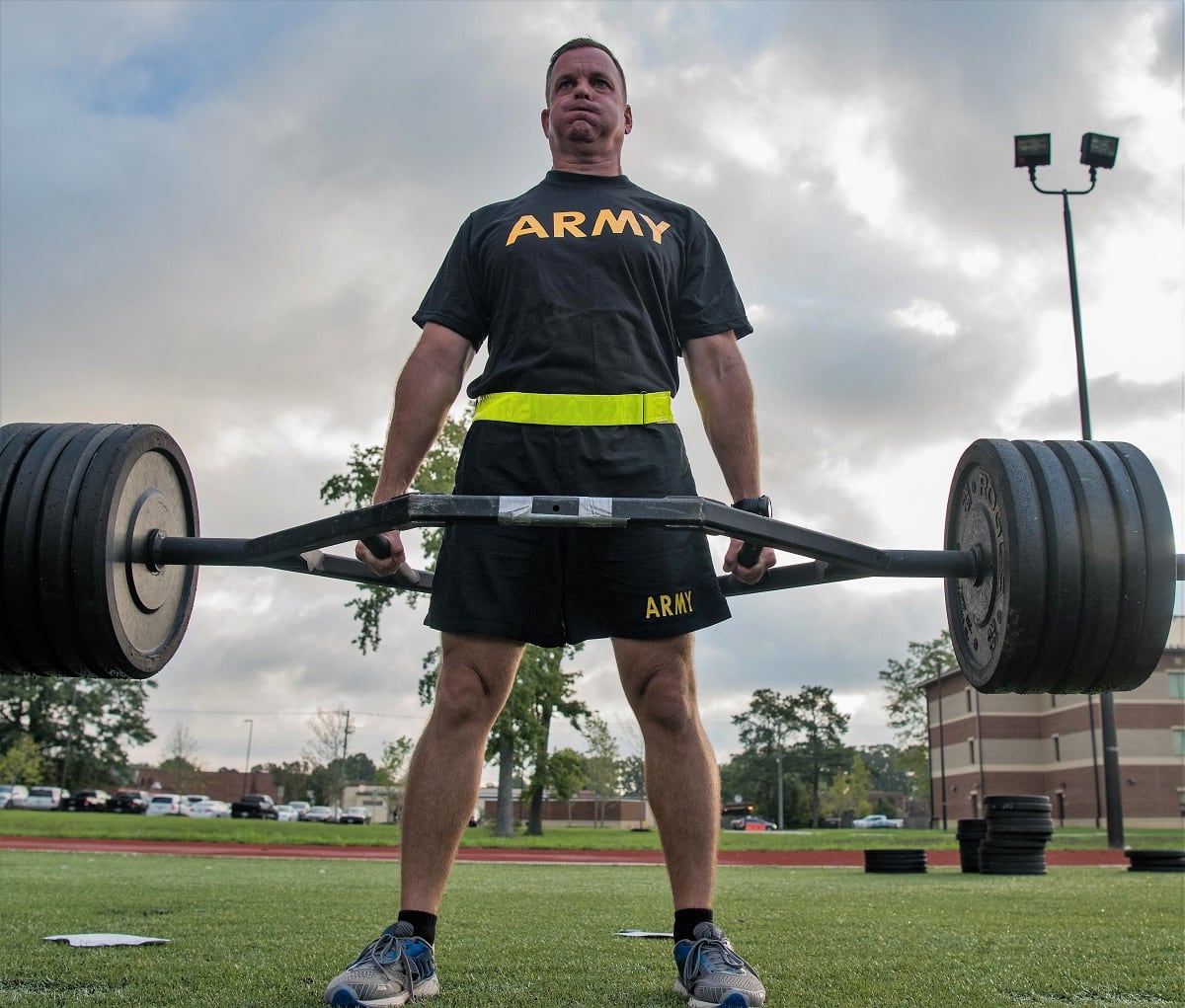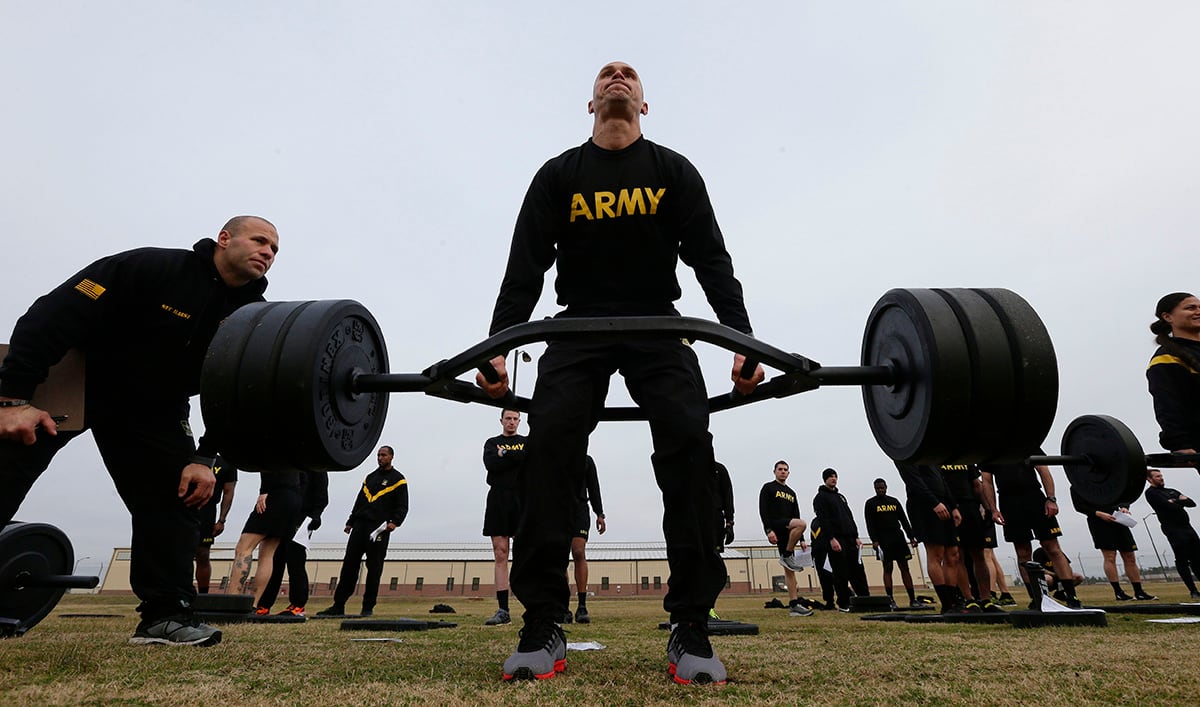The Army Combat Fitness Test will likely become standard in some parts of the Army a few months earlier than the deadline to bring it to full operating capability, which can be in October 2019, but no later than 2020, according to policy released last summer.
Officials in recent months have touted October 2020 as the most likely deadline.
To make sure new soldiers are prepared to take the ACFT for a grade in October 2020, either in Advanced Individual Training or after reporting to their first units, they will have had to pass standards before graduating, the commander of the Center for Initial Military Training told Army Times on Wednesday.
“That should not be the first time you take the ACFT. You will have taken it in basic, in OSUT or in AIT," Maj. Gen. Malcolm Frost said of soldiers reporting to their first units after the changeover from the Army Physical Fitness Test. “For a number of months before that, we’re going to go fully online and have that become the standard."

The Army is about six months into a field test of 60 battalions across the active and reserve component, who are training for and holding their own practice ACFTs, then providing feedback that will inform scoring, technique and the training program that will support the ACFT.
Three of those units are in the initial entry training enterprise, with formations at basic training at Fort Jackson, South Carolina, infantry one-station unit training at Fort Benning, Georgia, and aviation maintenance advanced individual training at Joint Base Langley-Eustis, Virginia, Frost said.
“So we are learning, right now, everything we need to know about how to phase out the APFT, how to phase in the ACFT and what the standards need to be for graduation, physically,” he said.
CIMT fielded a working draft of standards last fall, on the same 100-point scale as the APFT, with the same 60 points-per-event as the threshold to pass. But the ACFT will also take a page from the Occupational Physical Assessment Test, which has three separate standards depending on the physical intensity of a soldier’s job.
The Army has not decided whether the ACFT standards will be based on military occupational specialty or unit type ― which could mean a higher fitness level required in infantry and armored brigades, for instance, versus sustainment or engineering brigades.
The basic training standards will likely be MOS-based, Frost said, as not all soldiers will know what kind of unit they’ll be assigned to first.
“The goal is that every trainee, before they graduate BCT, has to pass 60 points across the board,” he added. “Now, is that feasible?”
Until last year, recent Army history designated 50-50-50 as a passing APFT score, with the understanding that new soldiers would make up that fitness deficit later on.
In early 2018, when the Army revamped its basic training program of instruction, the standard went back up to 60-60-60, following a survey in the operational force that found new soldiers were too far behind on physical fitness.
RELATED

But the ACFT is a more complex test, with six events that require a complement of equipment, rather than the push-ups and sit-ups most Americans have been familiar with since elementary school.
CIMT is considering the way soldiers are trained on ACFT, as well as the amount of time it takes to do that and teach everything else that needs to be mastered in basic training, Frost said.
They have not decided whether there will be a reduced ACFT standard to graduate basic, but they do plan to start testing it for the record before operational units.
“And that is our goal, for it to come online in the initial military training enterprise before it comes online in the Army,” Frost said.
Meghann Myers is the Pentagon bureau chief at Military Times. She covers operations, policy, personnel, leadership and other issues affecting service members.





